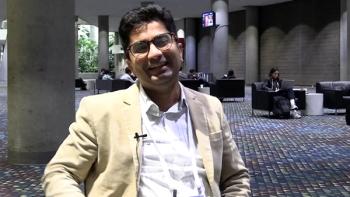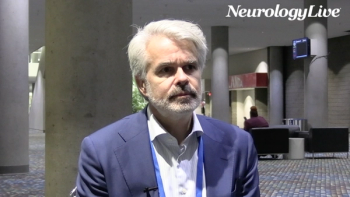
Discontinuing Low-Dose Aspirin Shows No Impact on Recurrence Rate of Surgically Treated Chronic Subdural Hematoma
Key Takeaways
- The SECA trial found no significant difference in cSDH reoperation rates between ASA and placebo groups, suggesting ASA continuation may be safer than previously assumed.
- Cardiovascular event rates were similar between groups, with slightly more minor bleeding in the ASA group, supporting a nuanced risk–benefit assessment.
SECA, A randomized clinical trial of 155 patients with chronic subdural hematoma, showed that perioperative continuation of low-dose acetylsalicylic acid did not lower recurrence risk compared with placebo.
The SECA (Surgical Evacuation of Chronic Subdural Hematoma and Aspirin) trial (NCT03120182) was an investigator-initiated, multicenter, placebo-controlled randomized clinical trial that assessed the impact of perioperative low-dose acetylsalicylic acid (ASA) continuation on chronic Subdural Hematoma (cSDH) recurrence. Recently published data found no statistically significant difference in reoperation rates between ASA and placebo groups, supporting previous findings that suggest aspirin may be safer to continue than previously assumed.1
Conducted across six neurosurgical centers in Switzerland, the SECA trial included 155 adults undergoing burr hole drainage for cSDH from 2018 to 2023. Participants were randomized 1:1 to either continue ASA or switch to placebo for 12 days surrounding surgery. The study sought to assess whether ASA discontinuation would reduce recurrence rates and monitored cardiovascular risk and mortality outcomes.
The authors, which included Maria Kamenova, MD, doctor of medicine at the University of Basel, noted, “The SECA randomized clinical trial suggests that discontinuing ASA treatment did not reduce the recurrence rate of surgically treated cSDH within 6 months. Recurrence risk estimates for continuous ASA treatment in this trial were distinctly lower than previously reported.”1
Of the 155 participants, 78 were assigned to continuous ASA and 77 to placebo, with mean ages of 77.9 and 77.6 years, respectively, and 16.1% identifying as female. Overall, reoperation within 6 months occurred in 13.9% of patients receiving ASA and 9.5% receiving placebo (weighted risk difference, 4.4%; 95% CI, –7.2% to 15.9%; P = .56).
Cardiovascular and thromboembolic event rates were similar across both groups: 0.27 per person half-year in the ASA group and 0.28 in the placebo group. Patients in the ASA group experienced fewer cardiovascular events over 6 months (0.02 per person) than those in the placebo group (0.06 per person). Minor bleeding events were slightly more common in the ASA group (0.10 vs. 0.08 per person in 6 months), while all-cause mortality was 0.06 in the ASA group compared with 0.03 in placebo. Although bleeding concerns frequently lead to ASA discontinuation before surgery, the data supported a more nuanced risk–benefit assessment that considers both cardiovascular protection and the risk of cSDH recurrence.
A previously published review in Frontiers in Neurology explored the perioperative management of low-dose ASA in patients with cSDH, drawing from five retrospective studies. The data showed that most patients had ASA discontinued upon admission, despite limited high-quality evidence on its impact. While bleeding risk has traditionally guided perioperative decisions, the review highlighted that thromboembolic events, particularly in patients with elevated cardiovascular risk, may be underrecognized. In conclusion, the authors advocated for the development of risk stratification tools to help clinicians more effectively balance hemorrhagic and ischemic risks.2
Another recent systematic review and meta-analysis in the British Journal of Neurosurgery examined 44 studies including over 16,000 patients with cSDH who underwent surgical evacuation. The analysis found that patients already taking anticoagulant or antiplatelet medications at baseline had a higher chance of cSDH coming back, and were also more likely to experience serious clotting issues like strokes or heart attacks. However, there wasn’t enough solid evidence to guide when it’s safe to restart these blood thinners after surgery. These findings supported the need for more prospective data, like what the SECA trial offers, to help strike the right balance between bleeding and clotting risk in surgical cSDH management.3
Kamenova et al noted that the SECA trial adds to important data supporting risk-adapted ASA management in cSDH and the need to carefully weigh thrombotic and bleeding risks. Given the relatively low recurrence rates observed with ASA continuation, the findings support a more individualized, risk-based perioperative approach. Further studies may help refine clinical guidelines.1
REFERENCES:
1.Kamenova M, Pacan L, Mueller C, et al. Aspirin Continuation or Discontinuation in Surgically Treated Chronic Subdural Hematoma. JAMA Neurology. Published online April 27, 2025. doi:https://doi.org/10.1001/jamaneurol.2025.0850 2.Mongardi L, Dones F, Mantovani G, et al. Low-Dose Acetylsalicylic Acid in Chronic Subdural Hematomas: A Neurosurgeon’s Sword of Damocles. Frontiers in Neurology. 2020;11. doi:https://doi.org/10.3389/fneur.2020.550084 3.Schirmer CM, Bulsara KR, Al-Mufti F, Haranhalli N, Thibault L, Hetts SW. Antiplatelets and antithrombotics in neurointerventional procedures: Guideline update. Journal of NeuroInterventional Surgery. Published online May 15, 2023. doi:https://doi.org/10.1136/jnis-2022-019844
Newsletter
Keep your finger on the pulse of neurology—subscribe to NeurologyLive for expert interviews, new data, and breakthrough treatment updates.































